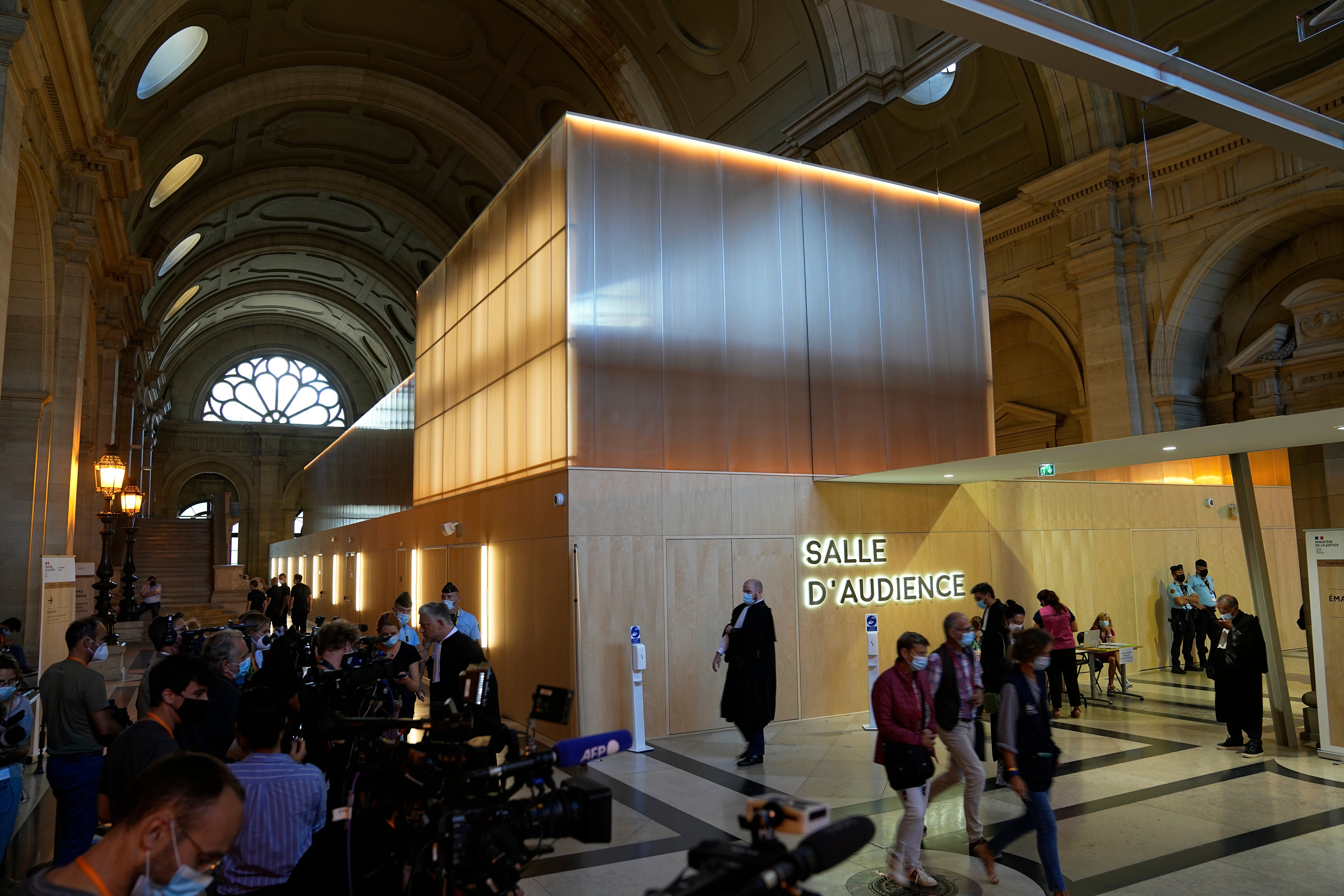Secure Paris attacks courtroom nestled within storied site
The November 2015 Paris attacks trial is taking place in the Palais de Justice, a national monument whose walls date back to the 13th century and King Louis IX

Your support helps us to tell the story
From reproductive rights to climate change to Big Tech, The Independent is on the ground when the story is developing. Whether it's investigating the financials of Elon Musk's pro-Trump PAC or producing our latest documentary, 'The A Word', which shines a light on the American women fighting for reproductive rights, we know how important it is to parse out the facts from the messaging.
At such a critical moment in US history, we need reporters on the ground. Your donation allows us to keep sending journalists to speak to both sides of the story.
The Independent is trusted by Americans across the entire political spectrum. And unlike many other quality news outlets, we choose not to lock Americans out of our reporting and analysis with paywalls. We believe quality journalism should be available to everyone, paid for by those who can afford it.
Your support makes all the difference.The November 2015 Paris attacks trial is taking place in the Palais de Justice, a national monument whose walls date back to the 13th century and King Louis IX.
In the heart of Paris, on the same island that holds Notre Dame Cathedral and the city's police headquarters, it has been a center of power for France for generations and was built on ancient Roman ruins. It also is home to Louis' famed Gothic Sainte-Chapelle.
The palace was expanded through the ages by French kings, many of whom lived in the same wing that now houses the secure complex of rooms specially constructed for the nine-month terror trial. The wing has a statue of Louis IX, known as Saint Louis standing beneath an oak tree administering justice.
According to historians Hélène Bellanger and Marc Renneville, at the end of the 13th century, King Philippe the Fair remodeled the palace to also host courts.
The palace then hosted the Revolutionary Court during the Reign of Terror, and in 1793 famously tried Marie-Antoinette and others before they were guillotined.
It has burned repeatedly, most notably during the “semaine sanglante” (bloody week) of 1871, when the Versailles government repressed the Communards and a fire ravaged most of the court buildings.
French novelist Emile Zola also faced trial in the building during the Dreyfus affair at the end of the 19th century. And the walls still bear scars from bullets fired in street battles to retake Paris from the Germans in World War II.
Paris moved the bulk of the court proceedings to a more modern building in the city's north in 2018. In January 2020, the French government decided to use the structure's cavernous side hall for the exceptional needs of the November 2015 Paris attacks trial, the biggest trial in French history.
Working with cultural authorities and the architect in charge of protected national monuments, construction finished over the summer.
Twenty men are accused in the Islamic State group’s 2015 attacks on Paris that left 130 people dead and hundreds injured. The new chamber, which has pale wood and enormous screens, can house 550 people, all the defendants and multiple cameras. Overflow rooms carry live broadcasts of the proceedings.
Among the plantiffs are nearly 1,800 victims, including survivors and families whose loved ones died that night. A total of 330 lawyers are representing them and the defendants.
Subscribe to Independent Premium to bookmark this article
Want to bookmark your favourite articles and stories to read or reference later? Start your Independent Premium subscription today.